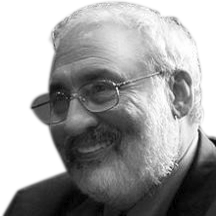Adam Smith’s “The Wealth of Nations” was published in 1776 and challenged the era’s conventions about economy. His main thesis was that should individuals will act purely on self-interest, general wealth will prosper. This fundamental metaphor in Smith’s work is called “the invisible hand”.
For over two centuries this was the basic economic theory, notwithstanding the opposing socialist theory by Karl Max. Then, in the 20th century, Joseph Stiglitz came along and dared to challenge Smith’s approach. Stiglitz asserted that Smith’s economic theory fitted the 18th century, but certainly not modern economy.
These are Stiglitz’s main arguments:
In order for the invisible hand principle to work, a full disclosure of information is needed from both side of each deal, selling or buying. However as modern economy is growing more information based, it is more likely for an a symmetry regarding the amount of information at the hands of each side. For example, the car seller might know that the car is damaged and not reveal this knowledge to the potential buyer. The flat owner may not share it with the tenant that the neighbors are loud musicians, inspired during wee hours only. Surely, you get the picture.
Already at the age of 27, Stiglitz received his prestigious doctorate from Yale. He developed economic models and theories that aimed at solving the information a-symmetry problem, and was awarded a Nobel Prize in economy in 2010. His work contributed to the reduction of wage gaps, raising minimum wage, increasing government intervention and reducing globalization.
Stiglitz also predicted the great financial crisis of 2008.



